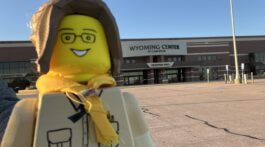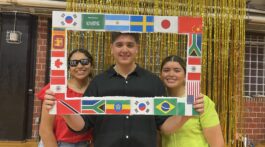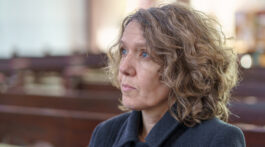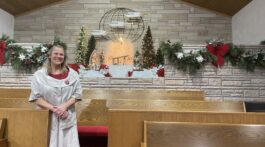Most of us have experienced a bad day at school. And, for many of us, a patient person listened to our tale of woe, nodding with a kind of knowing and yet condescending sympathy.
Several years ago, however, a middle schooler from Mexico had a bad day that two nations and countless social media users understood.
On April 16, 2015, a middle school girl named Alondra Luna Nuñez was forcibly taken from her school in Mexico and delivered to a woman she did not know in Texas. Dorotea García had visited Alondra’s home state of Guanajuato earlier in March. While there she identified Alondra as her missing daughter who had been taken illegally to Mexico eight years prior. Despite protests and presenting official papers, Alondra was still swept away to live with a stranger in another land.
Thankfully, video of the incident began circulating, as well as a video from Alondra calmly giving updates on her situation. The online outcry managed to grab the attention of officials who conducted a DNA test. Their conclusion? Dorotea García was not Alondra’s mother, and Alondra was quickly taken back to her family. This international debacle resulted in traumatic experiences for the Nuñez family—all because someone misnamed someone else.
In the mid-1960s, sociologists Peter L. Berger and Thomas Luckman made the observation that “Reality is socially constructed.”1 By reality they don’t mean things like gravity, but things like how you know to sit (not stand) on a chair, wear your swimming suit to the beach and not to the bakery, and how not to pick your nose … at least in public. The fabric of society, according to Berger and Luckman, is that “The common objectivations of everyday life are maintained primarily by linguistic signification” (p. 37). This means our abstract ideas of love, hope, faith and justice are actualized by the way we communicate with each other.
The amazing power of words
This idea, known as “social constructivism,” has some biblical foundation. One of the most powerful texts on what it means to be human occurs shortly after Adam receives the breath of life. “Now out of the ground the LORD God had formed every beast of the field and every bird of the heavens and brought them to the man to see what he would call them. And whatever the man called every living creature, that was its name (Gen 2:19, ESV). This isn’t just a setup for cutesy discussions with kids on the fun of naming the animals; this is God giving humanity the gift of communication to describe the physical reality He has just created.
Numerous passages throughout Scripture promote the power of this gift. Prov. 25:11-13 notes how finding the right words is equivalent to a jeweler placing gold and silver in their proper settings. James indicates we can burn the world down with careless communication (James 3:6). Jesus suggests that the words we choose to deploy will play a role in the judgment (Matt. 12:37); and Ellen White suggests that speech “is to be carefully studied and carefully guarded. This is the most important branch of education, but one which is sadly neglected in all our associations. The power to communicate to our associates may be a great blessing or a great curse.”2
Our reality is shaped by how we communicate to others, or ourselves. We use words to inflict pain or heal it. Communication can normalize hate, inspire acts of justice, and unmask abuses of power. Because it is ubiquitous, we often take for granted that the content and form of communication is fine.
However, the political and theological tribalism experienced by those in our communities testifies to the fact that our communication is sick and in need of healing.
A way to start is to take a moment to reflect on the tone and content of what we say and put online and then ask What kind of reality—or community—are we creating?
Dr. Seth Pierce is a popular author and speaker who pastored for 16 years before entering academia as assistant communication professor at Union College.
1. The Social Construct of Reality: A Treatise in the Sociology of Knowledge (NY: Anchor, 1967), 1.
2. Manuscript 77, 1897.










